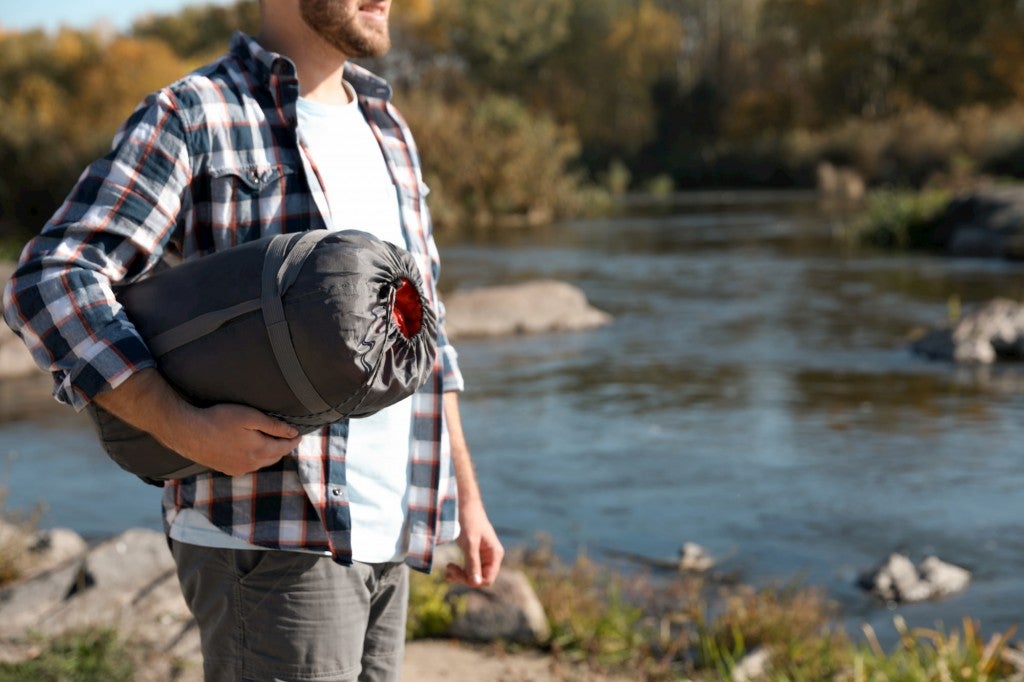This guide to cleaning your backpack is brought to you by Gregory. They make tough, durable gear that lasts, leaving you wondering how to keep your backpacking pack spotless since it won’t be wearing out anytime soon.
It’s inevitable—no matter how careful you are with your gear, at some point something terrible is going to happen inside your backpack. Maybe it’s a forgotten bean burrito, a leaked wag bag, a DIY bug spray explosion, or a mysterious sticky substance. Whatever happened, you need to fix it, and pronto.
Most outdoor gear is designed to be durable and tough, but that doesn’t mean you can go to town with detergents. Your backpack is designed to stand up to dust, dirt, and moisture, not serious solvents. Cleaning your backpack roughly can damage the fabric and compromise the treatments that keep your gear safe and dry.
How to Clean Your Backpack

Photo from Gregory Packs
Step 1: Prep
Instead of throwing your backpack in the washing machine (which you should never, ever do), approach it with care. Turn your backpack inside out and shake out any debris. If the mess inside is dry, brush off as much as you can with your hand or a dry towel. If it’s wet, wipe off what you can with a damp cloth or sponge.
Step 2: Start With a Gentle Wash
Using a mild and preferably biodegradable soap like Dr. Bronners or Green Goo, gently wash the inside of your backpack until any stains or mess are gone. Next, rinse the soapy patch with water—it may take more than one round of soaping and rinsing. Once the inside is clean, tackle the outside using the same method.
Step 3: Spot Treat Stubborn Stains
If you encounter an especially stubborn stain, use an old soft-bristled toothbrush to work the soap into the fabric. Even gentle scrubbing can wear down the protective coatings on your backpack over time, so scrub sparingly.
The rules for cleaning different types of stains on your clothes or furniture apply to your backpack too. Blood stains, for example, are best removed with cold water, as hot or even lukewarm water can set the stain. Salt or baking soda can help draw grease stains out of fabric, followed by a dollop of dish soap. Red wine stains are best treated with salt, blotting, and very hot water.
Special enzyme-based cleaners are great for biological stains like poop, grass, vomit, or sweat. Just double-check the ingredients and instructions to make sure the cleaner won’t be too harsh for your backpack’s materials. Whenever you’re trying a new cleaner, test it first on a small, inconspicuous area where it won’t matter as much if the waterproofing is compromised.
Step 4: Drying Time
Once you’ve spot-treated and cleaned your backpack, wring out the excess water and gently blot with a dry towel to remove moisture. Always leave enough time to air dry your bag thoroughly, out of direct sunshine. Never use a clothes dryer or hair dryer to speed up the process, as this can damage the fabric.
Avoid a moldy backpacking pack by leaving it in a well-ventilated area where air can circulate around all sides as much as possible after cleaning. When it’s completely dry, store your backpack in a cool, dry place.
Maintenance Tips That Will Keep Your Backpack Clean

Photo from Gregory Packs
Knowing how to clean your backpack is only one part of the puzzle—here are a few maintenance hacks that can go a long way in keeping your pack clean.
Get a Protective Rain Cover
A rain cover is an easy way to keep your backpack as clean and dry as possible, even when you’re schlepping through the damp, muddy wilderness. It’s easier to clean and dry a cover than a backpack, and cheaper to replace if something really catastrophic happens.
Embrace Dry Bags and Packing Cubes
Dry bags not only protect delicate items like electronics, they can also help keep liquids in if, say, your bottle of camping bourbon decides to escape. With packing cubes, you can group like items together, practice your ultra-light packing game, and color code your gear for easier access. Just remember that they’re usually not waterproof!
Use the Power of Air
If you’re wondering how to clean your backpack because the zippers and other hard components are sticky, dusty, or just plain dirty, turn to air instead of water. After you’ve turned your backpack inside out and shaken it out, you can vacuum all the nooks and crannies with the brush attachment.
For very fine particles and gunk that a vacuum might miss, canned air can be the answer—yes, the kind you use to degunk your laptop or other electronics. Once you’re done blasting out any stray particles, lubricate your zipper with a special-made product to keep it gliding easily.
Carry Basic Repair Tools
Pack duct tape, safety pins, twine, and a needle and thread on your next backpacking or camping trip. Think of it like a first aid kit for your gear! You can even invest in a gear aid kit for ready-to-go repairs on tents, sleeping bags, and backpacks.
Look for Gear Warranties
Extend the life of your outdoor gear with extended warranties or repair programs. Some companies, like Gregory, for example, have skilled technicians who will repair your backpack for free if it’s under warranty, or for a small fee if it’s not. Either way, it’s cheaper than buying a new pack, and keeps a serviceable piece of gear out of the landfill.
This article was brought to you by Gregory.
Pick up one of their lightweight backpacks today!
The Dyrt is the only camping app with all of the public and private campgrounds, RV parks, and free camping locations in the United States. Download now for iOS and Android.Popular Articles:
Articles on The Dyrt Magazine may contain links to affiliate websites. The Dyrt receives an affiliate commission for any purchases made by using such links at no additional cost to you the consumer.




